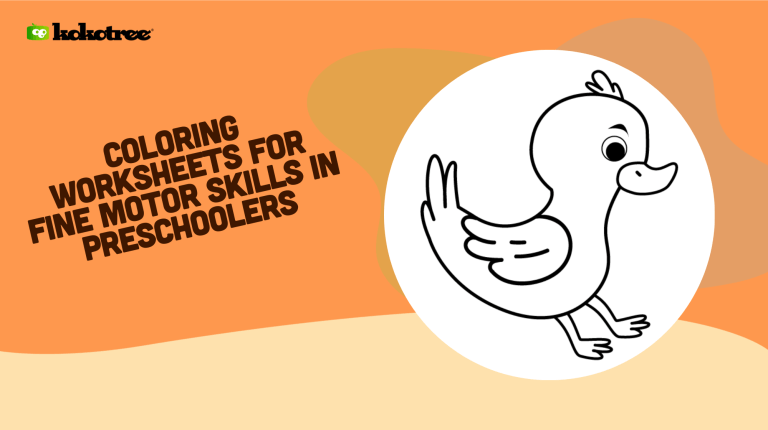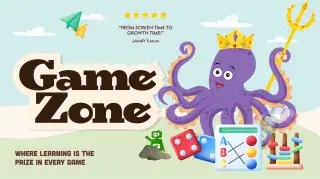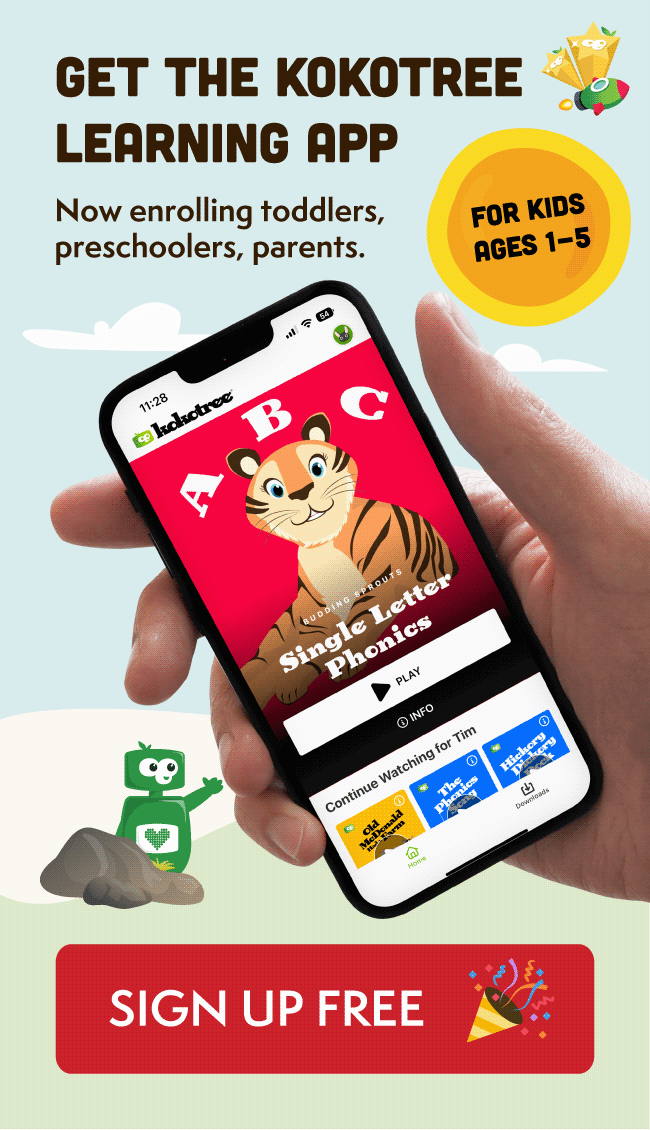

Are you searching for a fun and exciting way to help your preschooler improve their fine motor skills? Well, search no more! Coloring worksheets for preschoolers are a fantastic way to encourage your toddler’s artistic abilities and develop their tiny hands’ coordination.
Our delightful collection of coloring worksheets is designed especially for your little Picasso that will make learning as enjoyable as finger painting on the wall – minus the mess, of course! So, hold on tight as we embark on this colorful journey of discovery and growth, blending creativity with fine motor skill development. Let’s unleash the magic of colors together!
Before exploring different coloring worksheets that can benefit your preschooler, let’s understand why they’re crucial to their fine motor skill development. Fine motor skills refer to the ability to perform coordinated and precise movements using small muscles in our fingers, hands, and wrists. As your little one grows, these skills become vital for writing, cutting, tying shoelaces, and other everyday tasks.
Coloring worksheets are entertaining and provide ample opportunities to practice and enhance fine motor skills. These activities require children to grasp coloring tools, maneuver them, and exert varying levels of pressure, all contributing to fine motor skill development. Now that we know the importance of coloring worksheets let’s dive into some fantastic preschool coloring pages and creative activities that will keep your preschooler engaged and skillful!
Our collection of coloring worksheets is designed for preschoolers with varying interests and skill levels. We have crafted activities centered around diverse themes and techniques to ensure that your little artist stays fascinated and challenged.
These coloring pages feature delightful animals, plants, and natural scenes that coax your little one into a world of imagination and wonder. Besides improving their fine motor skills, talking about the creatures and their habitats helps your child develop language, observation, and comprehension abilities. Try introducing different types of animals like mammals, birds, reptiles, amphibians, or aquatic creatures – the options are endless!
Why not combine learning with fun? Familiarize your preschooler with the fascinating world of letters and numbers through these vibrant coloring pages. As they meticulously color each character, your child will become acquainted with the alphabet, numerals, and even basic sight words. You can enhance their experience by engaging them in games involving recognizing colors, counting, or phonics.
Geometric shapes and patterns can be visually enticing for young minds. Instruct your munchkin to color various shapes such as circles, squares, triangles, and other exciting silhouettes. This activity will boost their fine motor skills and help them recognize shapes and develop early math skills.
Kids love cartoon characters and superheroes! They are often drawn to their favorite characters and find deep joy in entering their fantastic worlds. Print out coloring pages featuring the adventures of Ant-Man, Moana, SpongeBob SquarePants, and Elsa, among others. Witness your child’s excitement while they practice fine motor skills and express their creativity!
Holidays like Thanksgiving, Christmas, Halloween, and Easter offer a plethora of unique and engaging themes to keep your preschooler amused. These festive coloring pages involve characters, ornaments, and elements tied to different celebrations. They are a fantastic opportunity to enhance fine motor skills while teaching your child about various traditions and cultures.
Making the most of coloring worksheets involves teaching your preschooler different coloring techniques. This approach helps develop their fine motor skills and exposes them to diverse artistic methods that fuel their imagination.
Begin with traditional coloring materials like crayons, colored pencils, or markers. Each coloring tool requires a different grip, style, and pressure, which helps strengthen the child’s muscles and coordination over time. Encourage your little one to experiment with various mediums and switch between them frequently to diversify their experience.
Although messier than traditional coloring, finger painting promotes tactile sensory exploration, creativity, and spontaneity, making it excellent for developing fine motor skills. Introduce your preschooler to finger painting by supplying them with non-toxic, washable paints and asking them to add color to their worksheets using their fingers.
Stamping can be another engaging way to add color to worksheets while promoting hand-eye coordination and grip strength. Utilize store-bought stamps or create custom stamps using objects like sponges or cut fruits and vegetables. Instruct your preschooler to dip the stamp in paint and press it onto the coloring page, creating fun patterns and designs.
Stencils are tools featuring pre-cut shapes that need to be filled in or traced. Utilizing stencils in coloring worksheets offers an exciting way to experiment with shapes, textures, and patterns while enhancing fine motor skills. Provide your child with a variety of stencils to create their masterpiece!

Get free parenting tips, news, updates, and content from Kokotree.
Now that you’re familiar with the various coloring worksheets and techniques, here are a few tips to ensure that your preschooler makes the most of their coloring experience.
Selecting age-appropriate coloring pages contributes to the child’s interest level and prevents them from becoming overwhelmed or frustrated. For younger toddlers, opt for large, simple images with minimal detail. As your child’s skills develop, increase the complexity and intricacy of the design.
Teaching your child the correct way to hold their coloring tools can impact their comfort and precision in the long run. Guide your preschooler to hold crayons or pencils with a tripod grip, positioning the tool between the thumb and index finger, and resting it against the middle finger.
While coloring worksheets are meant to develop fine motor skills, they also offer essential opportunities for self-expression and creativity. Encourage your child to add their unique twist to the activity through imaginative strokes, color choices, or patterns.
Positively reinforce your child’s efforts and achievements as they progress through the coloring worksheets. Celebrate their improvements and showcase their finished work to instill confidence and motivation for continued practice.
Ensure that fine motor skill development is consistent with your preschooler’s routine. Allocate time each day or week for coloring worksheets, gradually increasing the complexity and variety of the activities.
Coloring worksheets are an engaging and enjoyable way to enhance your preschooler’s fine motor skills. Combining varied themes, techniques, and tools allows you to create a stimulating world of colors and shapes that keeps your little artist excited and motivated. Remember to choose age-appropriate activities, encourage a proper grip, nurture creativity, and offer praise to ensure the best results. Happy coloring!
Beyond coloring worksheets, numerous other activities can supplement your preschooler’s fine motor skill development journey. Incorporating a range of hands-on projects keeps your child engaged and ensures that their fine motor skills are honed to perfection.
Introducing your child to the art of collages allows them to exercise their fine motor skills through cutting, tearing, and pasting various materials. Provide them with magazines, newspapers, or colored papers to create collages based on diverse themes or color schemes. This activity also encourages creativity and critical thinking.
Building puzzles and stacking blocks boosts cognitive development and refines hand-eye coordination and wrist dexterity. Invest in age-appropriate puzzles or building kits that match your child’s interests, increasing the complexity as they master their fine motor skills.
Sculpting clay, playdough, or putty offers an ideal opportunity for your little one to improve their finger strength, coordination, and control. Encourage your preschooler to create different shapes, patterns, or objects to aid their fine motor skill development.
Stringing beads or pasta pieces onto a string, pipe cleaner, or yarn can be an entertaining way to practice fine motor dexterity. Ensure that the beads match your child’s skill level, and gradually progress towards smaller, more intricate designs as their abilities advance.
Drawing and tracing are ideal ways to teach your child fine motor skills, attention to detail, and hand control. Start with simple objects, encouraging your child to draw freehand or trace outlines. As their skills improve, introduce more advanced techniques, such as shading, layering, or perspective drawing.
As we conclude this vibrant journey, incorporating diverse creative activities like coloring worksheets and beyond, we hope to have inspired and equipped you in your quest to develop your preschooler’s fine motor skills. With a world of colors, textures, and materials at their fingertips, your little one will undoubtedly flourish in their artistic and motor abilities. Keep the creativity flowing, the colors glowing, and remember, the sky’s the limit when it comes to nurturing your child’s development in a fun and engaging way! 🌈🌟
We understand that you might have some questions about coloring worksheets for fine motor skill development in preschoolers. In this FAQ section, we’ll address some common queries to support you on this colorful and creative journey with your little one. 🌈
Children can begin coloring activities as early as two years old, as soon as they can grip a crayon or coloring tool. Ensure you provide age-appropriate worksheets and materials to effectively facilitate their skill development.
While digital coloring apps can be entertaining, they may not provide the same level of fine motor skill development as physical coloring because they don’t require the same grip, pressure, and muscle control. We recommend incorporating physical coloring activities for maximum benefits.
Yes, it’s common for young children to switch hands while coloring or drawing as they develop hand dominance. Encourage them to try both hands, but also observe their preference and comfort level for a dominant hand over time.
To help your child improve coloring precision, focus on proper grip, practice, and gradually move toward more intricate and detailed coloring worksheets. Be patient and encourage consistent practice to refine their skills.
Absolutely! Coloring offers benefits such as cognitive development, improved focus, creativity, self-expression, relaxation, and even an introduction to early math and reading concepts.
Experiment with various coloring tools such as markers, crayons, colored pencils, and even finger paints. Each tool requires different grip, pressure, and techniques, which enhances your child’s fine motor development.
Make coloring a consistent part of your preschooler’s routine by scheduling daily or weekly sessions for best results. Remember, practice makes perfect!
Yes! Encourage your child to enjoy the coloring process without pressure to stay within the lines. As their fine motor skills develop, precision will improve naturally.
Both options work well for providing variety and engagement. You can utilize store-bought coloring books, printable worksheets, or even create your own resources tailored to your child’s interests and skill level.
If your child demonstrates a clear preference for their left hand, consider providing left-handed coloring tools specially designed to facilitate improved grip, comfort, and control.
Focus on providing non-toxic, age-appropriate materials, supervise your child during activities, and maintain a clean and organized workspace to ensure a safe and enjoyable experience.
Opt for shorter sessions, ranging from 10-30 minutes, based on your child’s age, attention span, and interest level. It’s crucial to keep the experience enjoyable and engaging without overwhelming them.
Experiment with different themes, techniques, and materials to find ones that spark excitement and motivation. You can also engage in collaborative coloring activities with your child, making it a shared and enjoyable experience.




